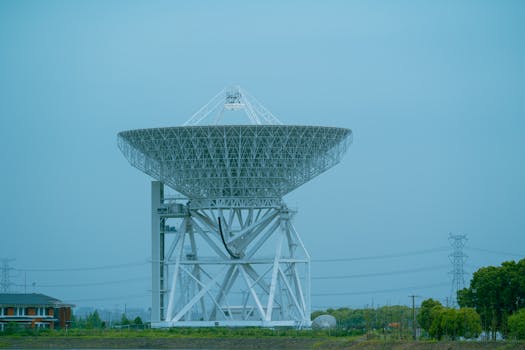Satellite Telecommunications 2023: What’s New and What’s Next? – Satellite Telecommunications

Satellite Telecommunications 2023: What’s New and What’s Next? – Satellite Telecommunications
Satellite telecommunications is becoming increasingly important in today’s digital age. With the rise of remote work, online learning, and streaming services, the demand for fast and reliable internet connectivity is higher than ever. Satellite telecommunications is playing a vital role in meeting this demand, especially in areas where traditional fiber-optic cables are not available. In this article, we will explore the latest developments and future trends in satellite telecommunications 2023.
Current State of Satellite Telecommunications
The satellite telecommunications industry has experienced significant growth over the past few years. The launch of new satellite constellations, such as Starlink and OneWeb, has increased the availability of satellite internet services. These constellations are designed to provide high-speed, low-latency internet connectivity to remote and underserved areas. The use of advanced technologies, such as phased arrays and beamforming, has also improved the performance and efficiency of satellite communications.
Another significant development in the satellite telecommunications industry is the increasing use of High-Throughput Satellites (HTS). HTS are designed to provide high-speed internet connectivity, with speeds of up to 100 Gbps. They are being used to support a wide range of applications, including broadband internet, mobile backhaul, and enterprise networks. The use of HTS is expected to continue growing, with many satellite operators planning to launch new HTS in the coming years.
Future Trends in Satellite Telecommunications
So, what’s next for satellite telecommunications? Several trends are expected to shape the industry in the coming years. One of the most significant trends is the increasing use of satellite telecommunications for 5G and 6G networks. Satellites will play a critical role in providing backhaul connectivity for 5G and 6G networks, especially in areas where fiber-optic cables are not available.
Another trend is the growing use of satellite-based IoT (Internet of Things) services. Satellites are being used to connect IoT devices in remote and underserved areas, where traditional cellular networks are not available. This is enabling a wide range of applications, including smart agriculture, smart cities, and industrial automation. The use of satellite-based IoT services is expected to continue growing, with many satellite operators planning to launch new IoT-focused satellites in the coming years.
Challenges and Opportunities
Despite the many opportunities in the satellite telecommunications industry, there are also several challenges that need to be addressed. One of the biggest challenges is the issue of space debris. The increasing number of satellites in orbit is creating a significant amount of space debris, which can pose a risk to operational satellites and other space-based assets. To address this challenge, satellite operators and regulators are working together to develop new guidelines and regulations for sustainable satellite operations.
Another challenge is the issue of spectrum allocation. The increasing demand for satellite spectrum is creating a significant challenge, with many satellite operators competing for limited spectrum resources. To address this challenge, regulators are working to develop new spectrum allocation policies, which will enable more efficient use of satellite spectrum.




